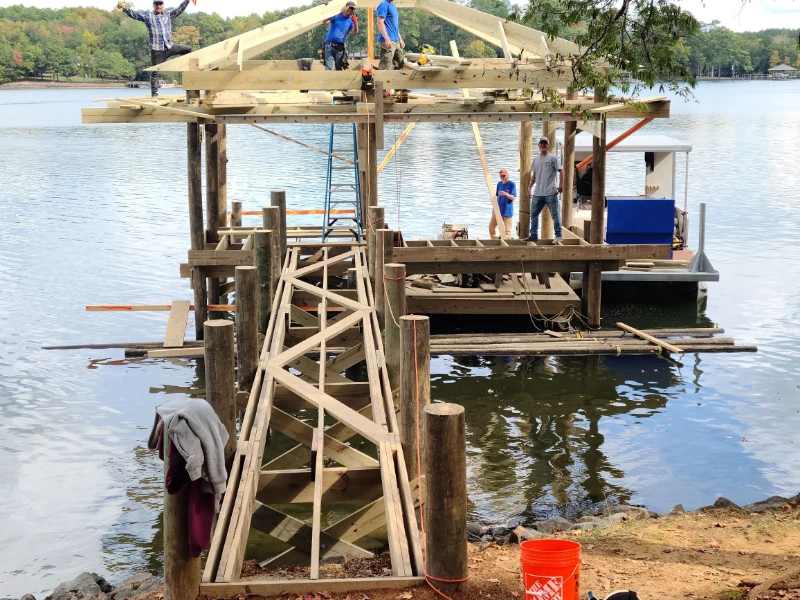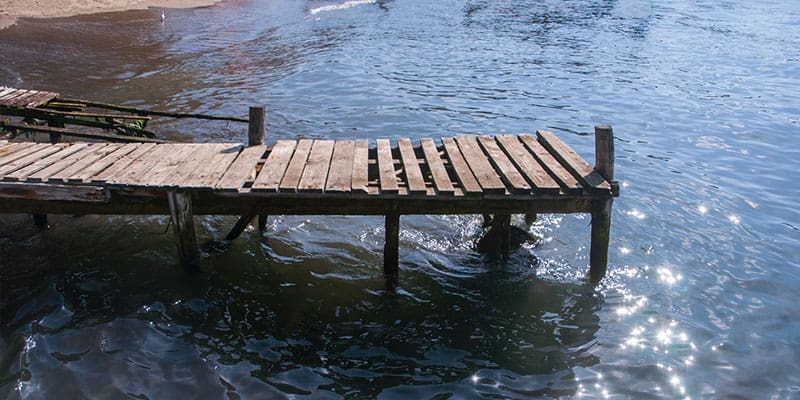Comprehending the Prices Involved in Dock Repairs
Comprehending the Prices Involved in Dock Repairs
Blog Article
Effective Dock Repair Service Techniques: Ensuring Structural Integrity
Ensuring the structural integrity of docks through effective repair work techniques is vital for the longevity and security of aquatic facilities. This includes a multi-faceted approach starting with thorough examinations utilizing innovative modern technologies like finder equipment and from another location ran lorries (ROVs) to detect both noticeable and concealed problems. Ultimately, selecting the right repair service materials, such as corrosion-resistant alloys and composite products, is vital for sturdiness. Architectural support approaches, including the implementation of cross-bracing systems and load-distribution plates, play a vital duty in mitigating tension points. Nonetheless, the importance of these methods becomes noticeable when exploring innovative fixing methods and preventative maintenance methods.
Analyzing Dock Damage
Examining dock damage is a critical initial action in making certain the structural integrity and security of any kind of docking facility. This preliminary analysis entails an extensive examination to identify both surprise and noticeable problems. Trick elements to examine include the dock's structure, pilings, decking, and hardware. Each part has to be looked at for signs of wear, rot, rust, or other forms of destruction that could compromise the structural stability.
Structural engineers or qualified inspectors normally execute these analyses utilizing specialized techniques and tools. Undersea examinations could use finder devices or remotely operated automobiles (ROVs) to discover immersed damages. Above water, visual evaluations are enhanced by utilizing moisture meters and various other analysis devices to reveal underlying concerns not right away noticeable to the naked eye.

Finding Repair Work Materials
Picking the suitable repair materials is an essential action in the dock restoration procedure, one that straight affects the durability and performance of the repaired structure. Product choice should be driven by variables such as environmental conditions, load-bearing requirements, and compatibility with existing dock components.
Along with wood, composite materials are significantly prominent because of their longevity and low upkeep demands. Composites, generally made from a blend of plastic and wood fibers, offer outstanding resistance to rot, pests, and UV damage. For steel docks, choosing corrosion-resistant alloys such as galvanized steel or marine-grade aluminum is essential to protect against corrosion and ensure structural integrity in saline water problems.
Epoxy resins and marine-grade sealers are essential for repairing fractures and securing joints, offering a water-proof barrier and boosting the dock's general strength. By thoroughly selecting high-quality materials, dock repair services can attain durable results, thus securing against future destruction and guaranteeing secure, dependable usage.
Architectural Support Techniques
Reliable structural support methods are vital in making sure the stability and durability of dock repair work. This technique is specifically efficient for anchors subjected to heavy tons or rough ecological conditions.
Another important technique is the application of fiber-reinforced polymers (FRP) These products use high strength-to-weight proportions and superb resistance to rust, making them ideal for reinforcing concrete or wood docks. FRP can be used in why not try here strips or sheets and bonded with epoxy resins to improve structural stability.
Supporting and anchoring systems likewise play a critical duty in architectural support. Cross-bracing, making use of metal or wooden light beams, can combat lateral pressures, minimizing persuading and motion. Securing systems, such as helical piers or driven heaps, give a stable foundation by transferring lots to deeper, more secure soil layers.
Last but not least, the integration of load-distribution plates can aid disperse weight more uniformly across the dock's surface area, minimizing local stress points. These strategies collectively ensure that anchors continue to be robust and safe, capable of standing up to the roughness of their operational atmosphere.
Advanced Repair Work Techniques

One more sophisticated strategy includes undersea welding, which enables repairs to be conducted without the demand to dewater the area. This approach is especially beneficial for dealing with structural issues in submerged dock parts, ensuring minimal interruption to procedures. Boosted welding methods, paired with robotic systems, supply precision and reliability, thereby expanding the life expectancy of the dock.
In addition, cathodic protection systems are applied to prevent corrosion in metal dock structures. By utilizing sacrificial anodes or impressed current systems, these methods successfully reduce the electrochemical procedures that bring about product degeneration.
Last but not least, advanced monitoring modern technologies, such as architectural wellness tracking (SHM) systems, provide real-time data on the problem of dock this frameworks. These systems enable positive upkeep and timely interventions, eventually making certain the lasting architectural stability of the dock.
Maintenance and Prevention
Upkeep and avoidance are basic ideas that underpin the long life and safety and security of dock structures. Routine examinations are paramount, enabling very early detection of damage, possible weak points, and ecological effects. A proactive strategy, involving regular look for rust, rot, and structural changes, minimizes costly repair services and lengthens the dock's operational life.
Safety nets need to include applying protective finishings to steel components to safeguard against rust and making use of treated timber to stand up to decay. In addition, ensuring proper water drainage and ventilation can avoid water buildup, which is a typical source of architectural deterioration. Integrating top quality products and adhering to supplier guidelines throughout construction and repair stages additionally play crucial roles in boosting durability.
Educating personnel in dock maintenance finest practices makes certain constant application of precautionary actions. Leveraging technological advances, such as drones for evaluations and sensing units for real-time tracking, can better enhance upkeep efforts. By prioritizing maintenance and avoidance, dock proprietors can ensure architectural integrity, operational safety, and affordable management over the dock's life expectancy.
Verdict
In final thought, keeping the architectural integrity of marine centers necessitates comprehensive dock repair methods. Thorough assessments using sophisticated tools uncover both noticeable and hid damages, while the choice of suitable fixing products improves toughness. Applying structural support approaches addresses tension points properly. Advanced repair techniques, paired with routine upkeep methods, guarantee the dock continues to be functional and safe under varied ecological problems. Embracing these strategies significantly prolongs the life expectancy and capability of marine infrastructure.
Ensuring the structural honesty of docks via reliable repair techniques is vital for the long life and security of marine centers.Choosing the ideal fixing materials is a pivotal step in the dock remediation process, one that directly influences the long life and efficiency of the fixed structure.Efficient structural support techniques are important in making certain the stability and longevity of dock repairs. By prioritizing maintenance and avoidance, dock proprietors can guarantee architectural stability, functional safety and security, and cost-efficient monitoring over the dock's life expectancy.
In conclusion, preserving the architectural stability of marine facilities requires extensive dock i was reading this repair methods.
Report this page